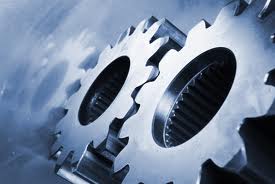We hear much talk about the decline of manufacturing in America. Some argue that America has lost its manufacturing capacity. The data from the most recent year available (2010) paints a somewhat different picture. Not only is the U.S. by far the largest economy with 23.1% of the world's GDP (China is second with 9.3% of the world's GDP), the U.S. is the second largest manufacturer. In 2010, America's manufacturing output was $1.952 trillion, just behind China's $1.995 trillion. Yes, in 2010 the U.S. lost the title as the world's largest manufacturer that it held for more than a century, but America is far from having lost its manufacturing capacity. America still manufacturers19.4% of the world's goods.
If you examine the data further, there are other important details. China leads in manufacturing output, but not in productivity. Workers in the U.S. manufacturing sector generated over eight times more output per person than their counterparts in Chinese factories. The U.S. manufacturing sector produced roughly the same amount of output in 2010 with 11.5 million workers as the Chinese manufacturing sector did with around 100 million workers.
Let's look at one of the most respected companies in America today: Apple. Apple employs approximately 63,000 people worldwide, with the high-tech design and engineering jobs located mostly in the U.S. In a 2006 study on Apple's iPod, Chrystia Freeland of Reuters reports that “the iPod employed nearly twice as many people outside the United States as it did in the country where it was invented: 13,920 in the U.S., and 27,250 abroad. Those 13,920 American workers earned nearly $750 million. By contrast, the 27,250 non-American Apple employees took home less than $320 million.” It is important to understand that if Apple manufactured its products in the U.S., those products would be more expensive and not as competitive in the marketplace. Not only would there be fewer overseas manufacturing jobs at Apple, there would also be fewer design and engineering positions at Apple in the U.S.
Assembly-line work where workers repetitively follow proscribed instructions is being automated or being moved to places where the cost of labor is low enough to compete with automation. In America, automation is replacing assembly-line work. With this automation come jobs required to design, program, operate and maintain the processes and equipment of a highly-automated factory. In these positions, workers are required to do things that machines cannot do, that require creative and novel solutions.
It is true that low-skilled, low-wage jobs are moving offshore. Jobs that require little training, specialized skills or education can be performed by anyone anywhere. There are plenty of workers worldwide that compete for low-skill jobs. Scarcity is what creates value, and something that can be done by anyone anywhere is hardly scarce. The financial value added to a product during manufacturing by low-wage, relatively unskilled labor is very low. The financial value added to a product through innovation, creativity, design and engineering is very high.
One key to success in our global marketplace is specialization. We see specialization in people, in companies, in industries, and in regions. Specialization allows each portion of a good or service to be produced at a much reduced cost through economies of scale and workforce expertise. Thomas Thwaites offers a compelling example of the power of specialization in his project How I built a toaster - from scratch. Thwaites single-handedly built a poor replacement for a $6.20 toaster after traveling thousands of miles, spending over $1,500, and applying 9 months of effort. Specialization is part of our modern global economy. The question is what do we want our workforce to specialize at: low-skilled jobs or high-value professions?
As the leader of a U.S.-based manufacturer (ZTEC Instruments), I strongly believe that there is great potential to grow high-value manufacturing jobs in America. At ZTEC, we provide professional opportunity to a workforce focused on the innovation, design, engineering, marketing, and other high-value activities that differentiate our products and services. These positions are highly rewarding in financial measures, and in the intrinsic measures of interesting and challenging work. This type of high-value manufacturing in America will drive our future prosperity and success in the global marketplace.

No comments:
Post a Comment